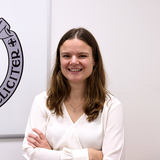Background
Every day, clinics worldwide generate vast amounts of digital data on health and pathology. Digital pathology alone, with its high-resolution imaging of tissue samples, creates terabytes of data. This data allows to improve our understanding of disease morphology and tissue phenotype. At the same time, genetic sequencing contributes extensive datasets, mapping the intricate web of tissue genotype and potential mutations, and metagenomics provides insight into encoded functions within the fecal and tissue microbiome. Lastly, brain imaging delivers rich data on brain structure and function, which could potentially lead to a deeper understanding of human (mental) health. Together, these data sources open opportunities to comprehensively understand diseases, from the visible tissue changes down to the molecular level. One example is understanding how gut microbiome organization (histology) and composition (genetics) correlate with genetic changes in the host (human genetics), and how do these combined changes influence gut health and disease susceptibility as well as brain function.
However, despite the immense potential these disciplines present, we only partially understand their intricacies. The sheer volume and complexity of the data often obscure subtle mechanisms related to health and disease. By using Artificial Intelligence (AI), we can analyze large-scale multimodal data and aim at connecting characteristics extracted from histological and genetic data.
Aim
- Linkage of gut and brain (histopathology, microbiome and fMRI) modalities via various methods, including multimodal artificial intelligence, to find insights into health and disease mechanisms.
- Clinical value extraction from gut-brain integration to identify disease parameters.
- Multimodal data learning developments with self-supervision elements to pioneer computational pathology tools that include microbiome-related modalities.
For more details about the HEREDITARY project, visit the official project website.







